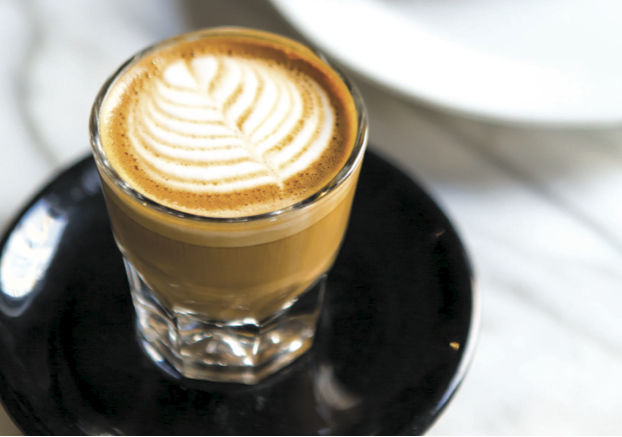
We brought a lot of buzz into our recent innovations issue, far and above the story-telling kind. We’re talking caffeine. Coffee in NYC (and across the country and ’round the world) is at a crux of creativity, part human, part techno-treatment, part broadening of our collective understanding of it. We caught up with one of our favorite brew-hounds, Liz Clayton, Sprudge writer, author of the awesome craft-coffee journey page-turner Nice Coffee Time, and sometime-contributor to Edible with stories like this take on the NY coffee scene and this insider look at Brooklyn stand-out Sweetleaf. Here’s what she had to say:
Edible Brooklyn: As a writer who devotes a good bit of her time to coffee, what have been some of the most exciting changes you’ve noticed in the craft coffee scene?
Liz Clayton: Honestly, as technologically savvy as even corner cafés have gotten, it’s a bit of a relief to see a shift back to relaxed standards — some of the time. I can enjoy a carefully poured, handcrafted pour-over as much as the next guy, but many coffee geeks are re-embracing the potential of “batch brewing,” and the brewers we have to make large volumes of coffee offer a lot more precision and potential than they used to be. So what I’m saying is, standards are higher across the board now, including in the “coffee of the day” served off of a batch brewer.
EB: How has NY’s coffee culture shifted over the last decade?
LC: It’s multiplied to the extreme! What used to be pioneering indie shops have evolved into small-scale “brands” — and I mean that in the nicest, least-smarmy way. Ten years ago, if you’d told me that a mom-and-pop company like Cafe Grumpy (who hadn’t even opened their first cafe in Greenpoint, Brooklyn yet) would one day take over a Starbucks space in Grand Central Station, I probably would have fainted.
EB: I was in a fairly major department store a week ago and saw a huge display for V60s and Chemex pots and myriad cone types and some fairly sophisticated espresso machines, along with a ton of other coffee-nerd accoutrements — a decade ago, that same store offered Cuisinart drip coffee makers and that was it. What’s changed and what do you think might be influencing this sort of shift in how people drink their coffee at home?
LC: I think people are just more used to it. They’ve seen enough establishments, whether they’re strictly coffee or a combination of coffee and culinary, and accept that there are better ways to brew coffee and better purveyors from whom to source it. The taste has been enough to convince many that these tools and coffees are investments worth making, and for many they’re small, not incredibly extravagant shifts that can improve quality of life.
EB: What cities do you think are the most up-and-coming coffee spots?
LC: I think a lot of cities where we haven’t seen much coffee movement in recent years are starting to get busy: Houston, various places in Wisconsin, Paris. To name a few.
EB: You recently wrote about uber-techie Sweetleaf for us. What was the most interesting part about researching and writing that story?
LC: It’s always fun to talk to cafe owners like Rich [Nieto] because their love for coffee keeps them passionate and to some extent wide-eyed. Those are things we could all use extra doses of in disaffected New York.
EB: What NYC coffee spots are your current favorites?
LC: I’m a huge fan of Joe Pro Shop on 21st, for their constant variety and nerdiness and warmth all at the same time, particularly considering they’re not really a cafe, but a headquarters/store with a coffee counter. I will also always love going to the original Ninth Street Espresso, since I’ve loved having coffee overlooking those willow trees for so long. In Brooklyn my favorite place is Southside, for consistently great coffee and a resolute lack of pretense, not a common combination unfortunately.
Photo credit: Vicky Wasik



